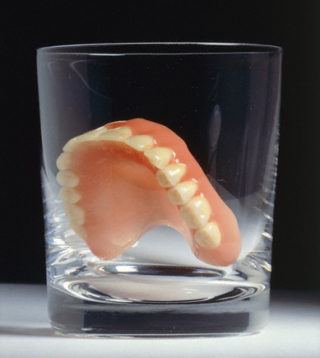Why Would I Need a Bone Graft Before Getting Dentures for My Sinuses?
 This question was recently asked by one of my patients, and is a somewhat common occurrence with denture wearers. There are a couple reasons why you would need a bone graft before getting dentures because of your sinuses, and I’ll go through what the reasons are and give you a general overview of the treatment process.
This question was recently asked by one of my patients, and is a somewhat common occurrence with denture wearers. There are a couple reasons why you would need a bone graft before getting dentures because of your sinuses, and I’ll go through what the reasons are and give you a general overview of the treatment process.
In order to talk about why you might need a bone graft, I should tell you first what a bone graft is, what your sinuses are, and what happens to your sinuses and how it relates to teeth, dental implants, and full dentures. Most often, the patients who need dentures are older patients. Dentures (some folks call them “plates”) are complete replacements for a full arch of teeth. If you need dentures, that means all your teeth need to be removed, or all your teeth are missing.
It makes sense that most denture patients are in their 50’s and older, because, even with poor home care, even if you have lots of tooth decay and gum disease, your teeth might actually last a while before causing any real problems. Sure, you might have a ton of decay and need lots of root canals, fillings, crowns, and extractions, but the disease process will take a few years.
What is My Maxillary Sinus, Anyway?
A sinus is the medical term for a space. There’s nothing in the sinus (usually), and it’s where air can pass through. Your nasal sinus is the space behind your nose where air passes when you breathe through your nostrils. If your kids pick their noses a lot (like mine do) and they’re looking for some big goobers, they’re picking their nasal sinuses clean. Your maxillary sinuses (we all have two maxillary sinuses, one on each side of our face) are located below your eyes, behind your cheekbones.
What Happens to My Sinus When I Lose a Tooth?
When you lose a tooth or multiple teeth, there is no longer a reason for your body to keep maintaining the bone level in that area. As a result, the maxillary sinus will migrate downward over time. If your tooth has been missing for a long time, the sinus may have drifted so much so there is no longer enough bone to support anything, like a dental implant, partial, or a full denture. The bone is the support foundation, and if the sinus has migrated so much so there is no longer sufficient bony support, we may prescribe treatment to modify the sinus location and add substitute bone in the area.
Most often, substitute bone is added to support a dental implant. A tooth implant is basically a screw that is inserted that, over about four months’ time, becomes cemented to the bone. We call that process ‘osseointegration’. Before we can simply add bone, we need to lift the sinus up to its previous position. That is why the bone graft procedure when we add substitute bone under the sinus is called the sinus lift procedure.
There are typically two approaches to a sinus lift procedure. If you’re only missing one tooth and the sinus needs a small to moderate amount of bone substitute, then pushing the sinus up from where the tooth was may be the suitable approach. This is called a crestal sinus lift, because the surgeon (or in my case, dentist) lifts the sinus from the crest of bone. The other approach is coming in from a small, temporary window at the side of the sinus. From the side, the surgeon lifts the sinus up and packs in a moderate to large amount of bone substitute.








Leave A Comment
You must be logged in to post a comment.